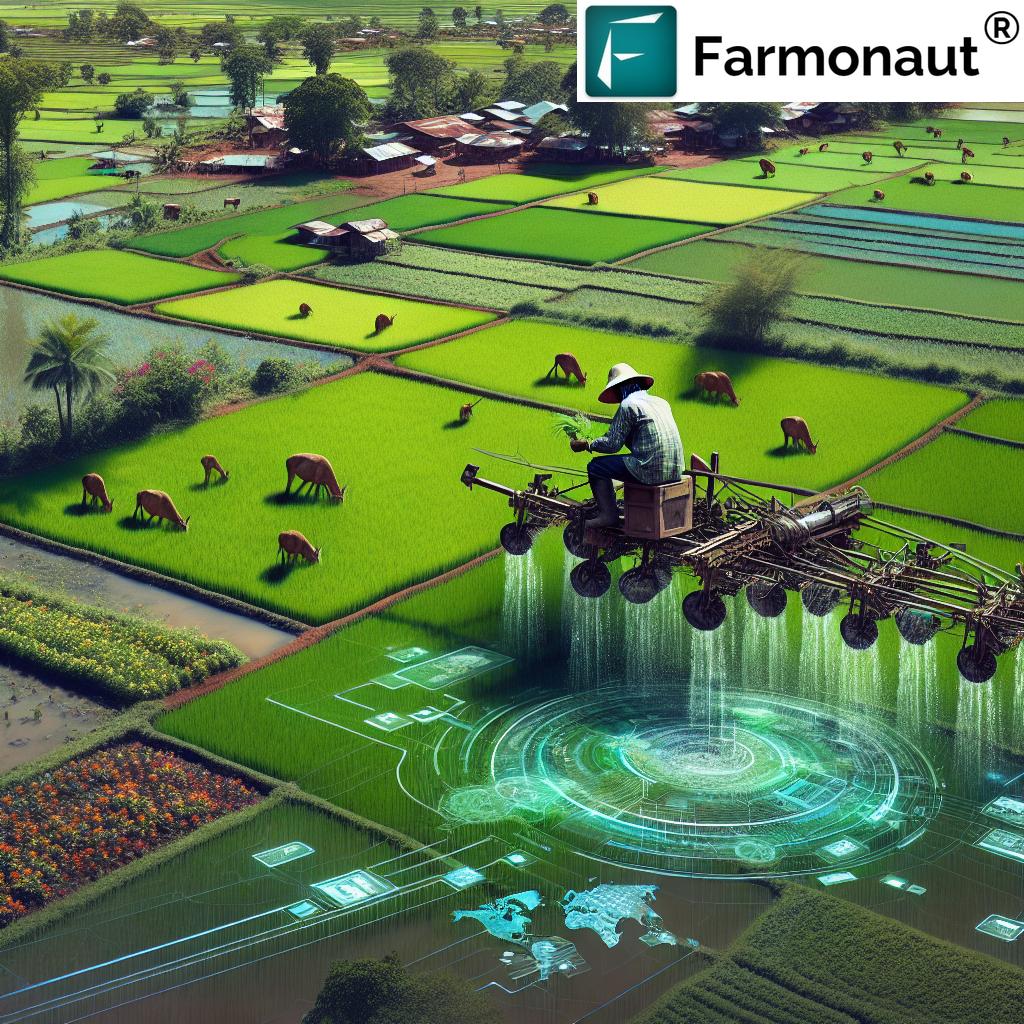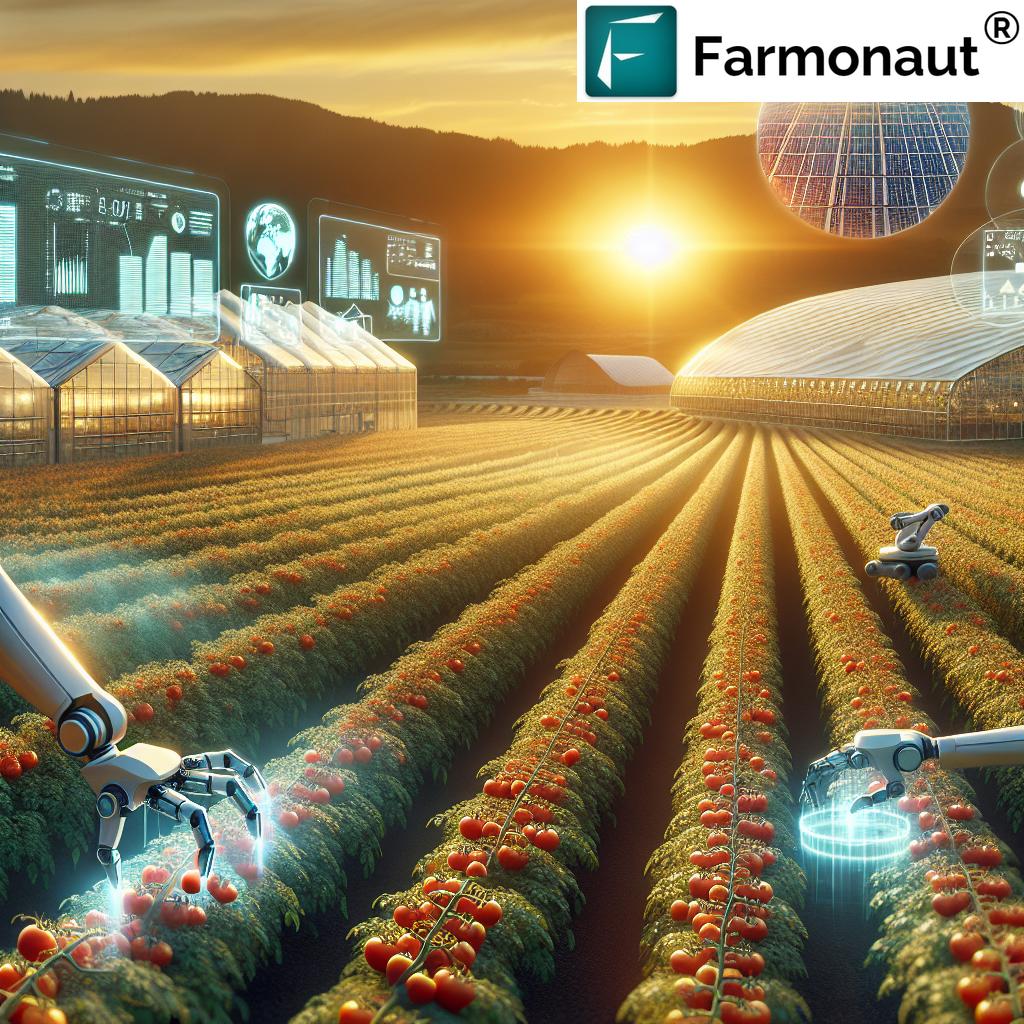India Land Use: 7 Solutions for Sustainable Farming
“India’s agriculture uses about 60% of its land, yet only 35% is sustainably managed, highlighting urgent improvement needs.”
Overview: Land Use in India and Its Significance
Land use in India is a complex interplay of historical practices, formal policy decisions, environmental challenges, and evolving sustainable practices. The way we utilize our land determines our food security, economic stability, and ecological future. With the world’s second-largest arable land—about 1,597,000 km², India supports the cultivation of crops like wheat, rice, pulses, cotton, fruits, and vegetables, making us a top global producer of essential commodities.
However, as our population grows and the climate changes, our systems are under unprecedented stress. Fragmented land holdings, agricultural land challenges, water scarcity due to overdependence on monsoon rains, and rapid urbanization put pressure on both agriculture and forestry in India.
Agricultural Land Challenges in India
Agriculture forms the backbone of our economy, employing a significant portion of the population and contributing substantially to our national GDP. Despite an abundance of arable land, the sector faces persistent challenges:
- Highly fragmented land holdings—the average farm size is only 0.74 hectares.
- Limited irrigation facilities, making around 63% of farmland dependent on monsoon rains.
- Land degradation and declining soil fertility due to overuse of chemicals and poor management.
- Growing climate variability, affecting crop yields and rural livelihoods.
- Conflicts over land use between agriculture, infrastructure, and renewable energy projects.
- Complexities in policy and implementation at the grassroots level.
These agricultural land challenges are interconnected, making solutions multi-dimensional and urgent.
Fragmentation of holdings also means lower economies of scale for farmers, higher input costs, and reduced productivity. We have to look at integrated solutions—policy reform, community management, and technology—to foster change.
Forestry in India: Ecological and Social Importance
Forests are a pivotal resource in India’s land use. As of 2021, forest cover reached 80.9 million hectares (21.71% of the total geographical area). From the vast forests of Madhya Pradesh to Mizoram’s dense green cover by percentage, our forests support an array of biodiversity, provide balance, and sustain various industries.
Their ecological role extends to:
- Stabilizing the environment and climate
- Protecting watersheds and water quality
- Providing resources like timber, medicine, and non-timber forest products
- Supporting tribal and local communities
However, modern challenges such as deforestation, illegal logging, and encroachment—often due to the expansion of agriculture, urbanization, and projects—are causing biodiversity loss and ecological imbalance.
“Agroforestry can boost farmers’ incomes by up to 30% while improving soil health and biodiversity in Indian farmlands.”
7 Solutions for Sustainable Land Use in India
To address the intricate relationship between land use, agriculture, climate, and forestry in India, we must implement multi-pronged, evidence-based interventions. Let us explore these seven sustainable solutions, explain how each works, and how they can be tailored to Indian contexts.
1. Agroforestry Systems in India
Agroforestry is the integration of trees, crops, and sometimes livestock on the same unit of land, optimizing resource use across biological, economic, and social goals.
Key Features:
- Improves soil health by curbing erosion and replenishing nutrients
- Enhances biodiversity, providing varied habitats
- Sequesters carbon, mitigating the impact of climate change on farming
- Reduces dependence on single crops, offering risk diversification and improved livelihoods
- Supports multiple income streams (timber, fruits, fuelwood, gum, fodder)
Prominent Agroforestry Systems in India:
- Farm forestry (individual farmers plant trees within or along field edges)
- Community forestry (collective plantations on village/common land)
- Social and extension forestry (government-supported, often on degraded or waste lands)
The adoption of a National Agroforestry Policy in 2014 and supporting schemes have positioned agroforestry as a core sustainable land use approach.
Farmonaut’s carbon footprinting tools empower farmers and businesses to monitor and reduce environmental impact, aligning perfectly with agroforestry goals.
2. Crop Rotation and Diversification
Relying on the same crop season after season (monoculture) leaves land vulnerable to degradation, pest outbreaks, and declining productivity. Crop rotation—alternating crops like pulses, wheat, rice, oilseeds, and vegetables—can restore soil nutrients naturally, reduce fertilizer dependence, and disrupt pest cycles.
Benefits:
- Builds long-term soil fertility and resilience
- Reduces the need for synthetic pesticides and fertilizers
- Promotes sustainable water and resource management
- Spreads economic risk for farmers by growing multiple commodities
Crop diversification—adding value crops like fruits (mango, banana), vegetables, or medicinal plants—expands market options and enhances economic development at the farm and national levels.
3. Organic Farming and Natural Inputs
The move towards sustainable agriculture practices means minimizing chemical dependency. Organic farming prioritizes natural inputs (compost, manure, green manure, biopesticides) and fostering healthy soil biology. This safeguards food security by producing residue-free crops while reducing the environmental load.
Advantages:
- Enhances soil organic matter and structure
- Prevents water pollution from chemical runoff
- Improves long-term sustainability of land resources
- Enables premium pricing for certified organic produce, supporting local livelihoods
Large-scale adoption remains a challenge due to transition costs, certification barriers, and knowledge gaps. However, platforms like Farmonaut offer product traceability via blockchain, enabling transparency and trust in organic supply chains for both food security and export promotion.
4. Irrigation and Water Management
With only 36.7% of total agricultural land in India irrigated, most areas remain vulnerable to monsoon variability. Over-extraction of groundwater and inefficient canal networks further worsen water scarcity.
Key Focus Areas for Sustainable Water Management:
- Promoting micro-irrigation systems like drip and sprinkler (reducing water use by up to 50%)
- Reviving traditional tanks and rainwater harvesting systems
- Regulating groundwater extraction through monitoring and policy
- Smart scheduling of irrigation using satellite data in agriculture for precise crop needs (Farmonaut’s crop health monitoring)
Efficient water management directly boosts crop productivity, reduces resource wastage, and builds climate resilience—which is crucial for smallholder farmers across India’s diverse regions.
5. Precision Farming with Satellite Data
Technological innovations are transforming how we manage land use in India. By harnessing satellite data and AI, farmers access real-time information on crop health, irrigation requirements, pest outbreaks, and weather patterns. This data-driven approach allows:
- Smart, targeted application of water, fertilizers, and pesticides
- Minimized resource wastage and reduced input costs
- Early identification of crop stress and disease
- Higher overall yields and profitability
Providers like Farmonaut make precision agriculture affordable and scalable—even for small plots—by offering:
- Multispectral satellite imagery (NDVI, soil moisture, crop health indices)
- AI-based farm advisory with tools like Jeevn AI
- Blockchain-based traceability for transparency across supply chains
- Fleet and resource management for improved farm efficiency
This is a major leap for Indian agriculture—enabling informed decisions, enhancing food security, and improving resource utilization.
6. Renewable Energy and Land Use: Solar & Agrivoltaics
Renewable energy is fundamental to India’s green development. Large-scale solar projects often face land use conflicts with farmers, especially when set up on prime agricultural land.
Emerging Solutions: Agrivoltaics & Dual-Use Systems
- Agrivoltaics: Combining solar panels with crop cultivation, enabling dual use of land for energy and food production.
- Modern design allows for raised panels, so field operations continue underneath.
- Innovative pilot projects in Maharashtra and Gujarat demonstrate that yields can be maintained while generating clean energy.
However, there are regulatory and financial barriers to wider adoption. Continued policy innovation—such as supporting farmer-owned solar cooperatives—along with technology integration, is key for inclusive, sustainable energy transitions.
7. Land Policy Reform & Community Management
Land management in India is highly complex. Fragmentation of holdings, lack of clear titles, and top-down policy decisions often hinder sustainable development. Solutions must address:
- Consolidation of land holdings to improve economies of scale
- Promoting joint or collective farming models
- Strengthening land tenure for smallholder and women farmers
- Resolving land use conflicts between agriculture, forestry, and energy projects
Empowering local communities and ensuring participative, transparent decision-making can facilitate better adoption of sustainable practices.
Farmonaut’s blockchain-based traceability solutions and crop area estimation tools can improve planning, access to loans, and transparency.
Comparison of Land Use Solutions for Sustainable Farming in India
| Solution | Estimated Adoption Rate in India (%) | Key Benefits | Main Challenges | Environmental Impact Rating |
|---|---|---|---|---|
| Agroforestry | ~12% |
|
|
High |
| Crop Rotation & Diversification | ~48% |
|
|
High |
| Organic Farming | ~2% |
|
|
High |
| Irrigation & Water Management | ~37% |
|
|
Medium |
| Precision Farming (Satellite Data) | ~7% |
|
|
High |
| Renewable Energy / Agrivoltaics | ~1% |
|
|
Medium-High |
| Land Policy Reform & Community Mgmt | – |
|
|
High |
Farmonaut: Technology for Sustainable Land Use in India
The future of land use in India lies in embracing technological innovations and data-driven management. Farmonaut stands at the forefront by bringing satellite imagery, AI, blockchain, and resource management directly to farmers, agribusinesses, governments, and financial institutions.
- Satellite-based crop health monitoring: Get insights on NDVI, soil moisture, and stress detection to take timely action on crop health.
- Jeevn AI-Advisory System: Provides real-time, personalized advice for each farm—right on your mobile or desktop.
- Blockchain traceability: Absolute transparency from seed to shelf via product traceability.
- Fleet Management: Fleet and resource management tools optimize vehicle/machinery usage for agribusinesses.
- Carbon Footprinting: Track and reduce your farm’s carbon emissions for regulatory compliance and sustainability.
- API Access: For developers, policymakers, and businesses, Farmonaut opens API access and detailed developer docs so you can integrate satellite and weather data with your platforms.
- Crop loan & Insurance: Satellite-based verification streamlines access to crop loans and agricultural insurance for smallholders and financial institutions.
Farmonaut is dedicated to making precision agriculture affordable and scalable—helping India move towards sustainable agriculture practices, reduce land degradation, enhance food security, and build climate resilience.
Frequently Asked Questions (FAQ)
1. What is the current status of land use in India?
As of 2011, India had around 1,597,000 km2 of arable land—the second largest globally. About 60% of our land is used for agriculture, with only 35% sustainably managed. The rest is divided between forests, grasslands, wetlands, and infrastructure.
2. What are the major agricultural land challenges in India?
Key challenges include fragmented land holdings, low irrigation coverage, dependence on monsoons, land degradation, and water scarcity. Climate change and policy-related issues further add complexity.
3. How does forestry in India contribute to sustainability?
Forests are vital for biodiversity, carbon sequestration, ecological balance, and supporting rural livelihoods. With 80.9 million hectares under forest cover, protecting and expanding forests is essential for sustainability.
4. What is agroforestry and why is it important?
Agroforestry blends trees, crops, and sometimes livestock to restore soil health, diversify incomes, and boost environmental resilience. It’s key for land degradation reversal and biodiversity improvement.
5. How is satellite data used in agriculture?
Satellite data enables crop health monitoring, irrigation planning, and early pest/disease alerts. Tools like Farmonaut deliver this data via apps, dashboards, and APIs to maximize farm efficiency.
6. What is agrivoltaics and how does it help?
Agrivoltaics is the dual use of land for both solar energy generation and crop cultivation. It helps farmers earn from energy while protecting food production—addressing the challenge of renewable energy and land use conflicts.
7. What policies support sustainable agriculture practices in India?
Key policies include the National Agroforestry Policy, soil health card initiative, PM-KUSUM for solar in agriculture, and various micro-irrigation schemes. Policy reform for land holding consolidation and stronger environmental protection are still needed.
8. Where can I get access to precision farming technologies?
Farmonaut offers affordable, scalable solutions for individuals, collectives, and institutions, providing precision farming, resource monitoring, farm advisory, and blockchain-based traceability.
Try Farmonaut now – Web, Android, or iOS
Conclusion: Building a Resilient Future for Land Use in India
The intricate relationship between land, agriculture, and forestry in India is at a pivotal moment. Balancing food security, environmental sustainability, and economic development requires that we:
- Move from fragmented to integrated management systems
- Embrace sustainable agriculture practices with a focus on biodiversity, soil, and community welfare
- Drive policy reform and empower local decision making
- Adopt technology and satellite data for smarter, informed farming
- Resolve land use conflicts through transparent, participative planning
- Prioritize renewable energy integration, protecting both farmers and the environment
Platforms like Farmonaut make advanced farm management practical and affordable—delivering real-time data, AI-powered insights, and trust via blockchain.
Together, by understanding our land use challenges and innovating our approach, we can secure a sustainable and resilient future for India’s farms, forests, and communities.
Meta description: India Land Use: 7 Solutions for Sustainable Farming. Discover the interplay of historical, environmental, and technological factors in Indian agriculture and forestry, and see how innovative solutions can secure a resilient future for the nation’s land and people.
For the latest in satellite data in agriculture, carbon footprinting, crop traceability, farm fleet management, and large-scale plantation monitoring—explore Farmonaut’s precision agricultural solutions today. Get started here →
Farmonaut: Your trusted partner in building smarter, data-driven, and sustainable farms.















